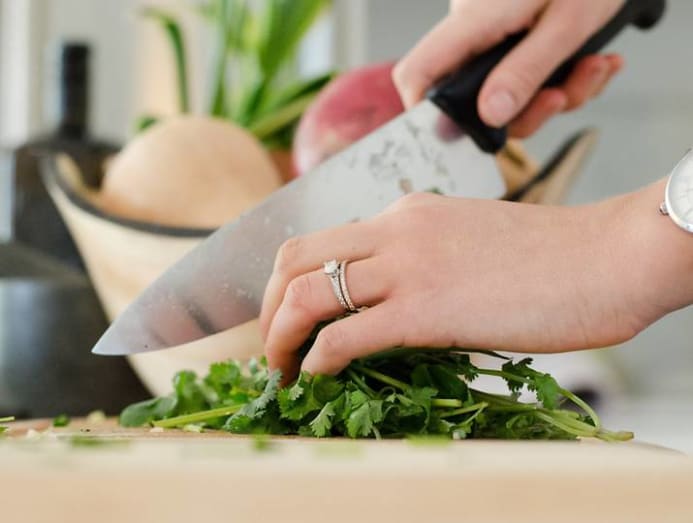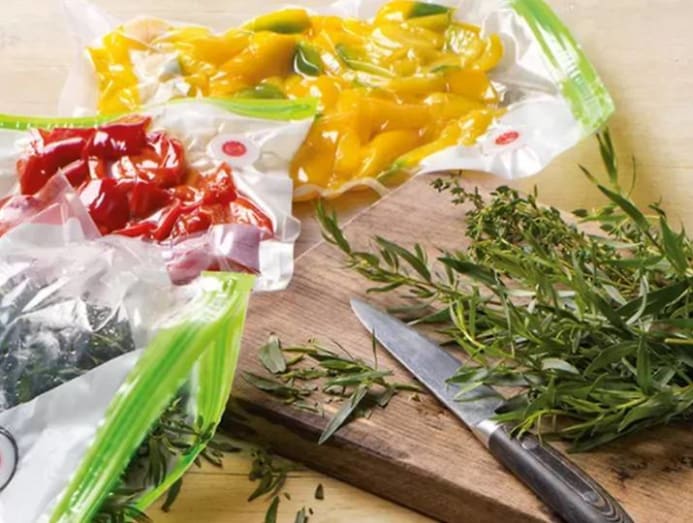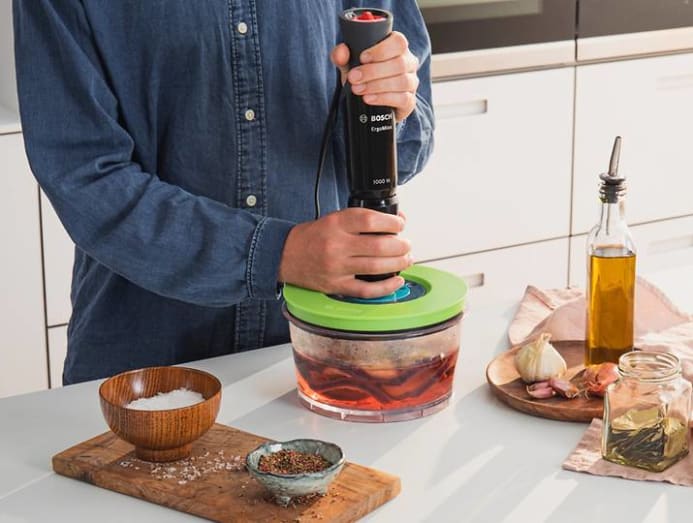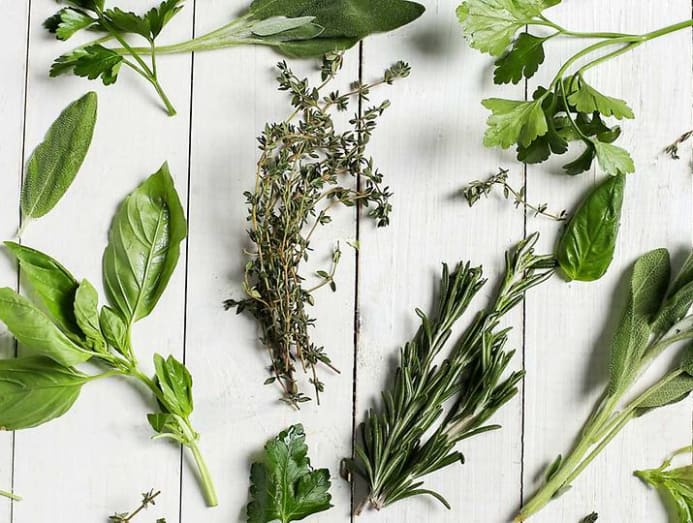Is your fridge full of spoiling food? Storage tips to avoid wastage and to save money
Do you end up with a lot of dairy items, fruits and vegetables you can’t use? Experts tell you how best to store these in the fridge.

(Photo: Freepik/foodiesfeed)
When was the last time you checked the contents of your refrigerator? And we don’t mean rummaging through the freezer for that last potong ice cream.
If you haven’t been scrutinising the crisper compartment – especially if you’ve been stocking up on fresh herbs and vegetables for a bit of home cooking – you might have a funky surprise lurking in there.
That unsavoury discovery in your fridge isn’t unique to you. In a 2017 study commissioned by the National Environment Agency (NEA), 24 per cent of the 443 households surveyed said that they often threw away spoiled food, and the top two reasons for doing so were a result of buying too much, and having food items hidden at the back of the fridge.
READ: Cooking tips: How to make canned food and instant noodles more nutritious
Furthermore, the amount of avoidable food waste is equivalent to each household throwing away a 2.5kg bag of rice every week, according to the study.
Food wastage isn’t a recent development either. The NEA noted that the amount of food waste generated in Singapore has increased by about 40 per cent over the last 10 years. In 2016, the amount of food waste generated was equivalent to the weight of over 3,500 MRT trains.

When it comes to perishable food, don't buy in bulk. It may seem like you're saving money when you buy more but if you have to throw out the limp bok choy, yellowed broccoli, mushy tomatoes and disgustingly damp mushrooms because you can't use them, you end up wasting money instead.
A good idea is to plan for the meals you're cooking and buy just enough.
Some online recipes even have ingredient calculators so you can adjust the ingredient quantities to suit your family's needs. And you wouldn't have to feel bad about throwing away food.
MAKE SURE YOUR FRIDGE IS COLD ENOUGH
Do you know what your refrigerator's temperature should be? Between zero and 4 degrees Celsius for the fridge, and -12 degrees Celsius and below for the freezer compartment, according to NEA.
“Temperatures of 5 degrees Celsius or higher increase enzymatic activity and respiration, and reduce shelf life,” said Dr Antara Chakraborty, a lecturer with Republic Polytechnic’s School of Applied Science.

If you're extra cautious, turn down the temperature of your fridge even lower, advised Catherine Seah, a lecturer from Nanyang Polytechnic's School of Chemical & Life Sciences.
Clostridium botulinum may be able to grow and produce harmful toxins if the temperature of the fridge is not consistently maintained below 3 degrees Celsius, she said.
A simple way to check your fridge’s temperature without fancy equipment is to place a regular thermometer in a cup of water and put it in the fridge compartment.
For freezer temperatures, do the same with the thermometer inside alcohol or cooking oil because water would freeze.

VACUUM-SEAL FOR 50 PER CENT LONGER FRESHNESS
Vacuum-sealing can stretch the shelf life of fruits and vegetables by up to 50 per cent; for fish, it can be extended by six to 18 days, said Dr Chakraborty.
“Vacuum-sealing removes oxygen, so the oxidative reaction in the food during storage is reduced."
A vacuum environment also prevents the growth of aerobic microorganisms, such as certain bacteria and fungi, which require oxygen to grow, she said.
The amount of avoidable food waste is equivalent to each household throwing away a 2.5kg bag of rice every week.
Consider the other benefits, too.
“The food items are protected from dehydration and freezer burn as moisture cannot evaporate, and ice crystals cannot form when sealed off from oxygen,” said Alexandra Jakobs, a product manager with Bosch’s product division consumer products.
VACUUM-SEALING PRECAUTIONS
Before you power up your sealer, it is important to ensure you observe food hygiene practices, said Seah.
This is because anaerobic microorganisms such as Listeria monocytogenes, which do not need oxygen to grow, can still multiply if they get into the vacuum-sealed bags despite being at a refrigerated temperature, she cautioned.

Then, there are some foods that can’t be vacuum-sealed, said Seah. These include fresh mushrooms, onion, garlic and soft cheeses as they may contain anaerobic bacteria.
Sealing such microorganisms in with food may lead to bacterial growth that can cause botulism, a potentially fatal disease caused by the bacterium Clostridium botulinum, she cautioned.
When it comes to produce that bruise easily such as strawberries, freezing before vacuum-sealing may work better.
"It may protect the texture and integrity of the produce," said Seah, explaining that when air is pulled out of the bag, unfrozen berries will compress and the juice will be squeezed out.
READ: Do you microwave food in plastic containers? Be careful of leaching chemicals
Jakobs recommended some prep work before sealing your fresh food. "Always rinse and/or peel fruits and vegetables thoroughly."
When sealing juicy, moist or marinated food, hang the bag up instead of placing it flat on the counter. This way, the liquid in the bag would not get under the vacuum seal and mess up your equipment.
Alternatively, use containers that are suitable for vacuum-sealing to prevent a mess when sealing food with liquid.

BEAT ETHYLENE GAS BEFORE SEALING
Sometimes, you can’t stop ethylene-producing fruits and vegetables from continuing to gas out in their vacuum-sealed pouches.
There are a few ways to get around it. Jakobs, for instance, suggested blanching vegetables such as asparagus, green beans, cauliflower and cabbage before sealing them.
For produce that can’t be blanched such as fruits, Dr Chakraborty recommended dropping some ethylene absorbents into the bag before vacuum-sealing them.
KEEP DAIRY ITEMS IN THE CENTRE OF THE FRIDGE
Most people keep their cartons of milk on the fridge door as it’s convenient to take them out.
But that location might make it spoil faster because it’s not as cold as the centre of the fridge – in fact, about 4.5 degrees Celsius warmer than the fridge’s middle portion, according to a 2017 study by Cardiff Metropolitan University.
Even better, tuck the milk carton right at the back of the fridge where it’s the coldest. It’s also a good spot for your cheese, provided it’s below 4 degrees Celsius.

But before you leave your cheese there, take it out of its plastic packaging and wrap it in wax or parchment paper first, advised the American Cheese Society.
Soft cheeses such as brie and cottage cheese would last a week, while hard ones, including cheddar, are good for three to four weeks.
ADD OIL TO LEFTOVER TOMATO PASTE
Whether you’re cooking a paella or stew, or making pizza or pasta, you’re bound to have some leftover tomato paste in the can.
To prevent the typical black ring from forming around the inside of the can when left in the fridge, pour a thick layer of oil to stop the edges of the paste from drying and oxidising.
Anaerobic microorganisms such as Listeria monocytogenes, which do not need oxygen to grow, can still multiply if they get into the vacuum-sealed bags despite being at a refrigerated temperature.
When it’s time to use, spoon off the oil, take the amount of paste you need, and pour the oil back. If a ring has already formed, use a paper towel to scrape it off before scooping out the paste.
DON’T PUT APPLES AND BANANAS TOGETHER
Some fruits and vegetables release a ripening gas known as ethylene; meanwhile, certain produce are more sensitive to ethylene than others.
For instance, apples are known to be ethylene producers, while bananas are sensitive to the gas. Put them together – even outside the fridge – and you’ll see that the banana turns brown and mushy quicker.
READ: Does cooking with an air fryer really mean eating healthy? It depends on you
Packing ethylene-producing fruits and vegetables such as avocados, kiwis, tomatoes and peppers in a bag before putting them in the fridge has the same quick-ripening effect (unless that’s your intention), so be sure to store them apart.
Here are more examples to keep separately:

USE PAPER TOWELS TO STORE SALAD LEAVES
Lettuce, arugula, kale and other salad leaves can wilt and turn slimy if stored in their original plastic packaging.
To absorb the excess moisture the leaves produce during refrigeration, transfer the leaves to a storage container, along with a few sheets of paper towel at the top and bottom, before closing the lid.
PLACE MUSHROOMS IN PAPER BAGS
Fresh mushrooms such as brown, button or portobello mushrooms are best kept after removing them from the cling film and plastic carton they come in.
Instead, put them in a paper bag before leaving them in the fridge for optimal freshness.
Temperatures of 5 degrees Celsius or higher increase enzymatic activity and respiration, and reduce shelf life.
TREAT FRESH HERBS LIKE BOUQUETS
Unless you have Thai basil, parsley or mint growing in your balcony, chances are, you’re going to have to buy fresh herbs from time to time.
And chances are, you’ll have a big bunch of unused herbaceous foliage just rotting away in your fridge.
To make them last for up to two weeks, stick them in a glass of water like you would flowers and place a plastic bag over the top.

For herbs with hardier stems such as thyme, rosemary and sage, roll them loosely in a damp paper towel and place them in a resealable plastic bag. They should last two to even three weeks in the fridge.
SOAK BERRIES IN VINEGAR SOLUTION
Strawberries, cherries and blueberries tend to get mouldy in the fridge.
To prevent that, soak them in a one-part-vinegar, three-part-water solution once you get back from the supermarket.
Rinse thoroughly, pat dry and they’re ready for the fridge.





